How Waveguide Isolators Ensure Low Loss and High Isolation?
In the demanding world of microwave and RF systems, maintaining signal integrity while preventing destructive interference is paramount to system performance. Waveguide isolators represent a critical technological solution that addresses these challenges through sophisticated electromagnetic principles and precision engineering. A Waveguide Isolator functions as a unidirectional device that allows electromagnetic waves to pass freely in the forward direction while providing substantial attenuation to signals attempting to propagate in the reverse direction. This fundamental capability is achieved through the implementation of ferrite materials operating under magnetic bias conditions, creating a non-reciprocal transmission medium that exhibits different propagation characteristics depending on signal direction. The combination of advanced materials science, precise mechanical design, and optimized magnetic field configurations enables these devices to achieve insertion losses as low as 0.2 dB in the forward direction while maintaining isolation levels exceeding 20 dB in the reverse direction, making them indispensable components in high-performance microwave systems across satellite communications, radar applications, and telecommunications infrastructure.
Advanced Ferrite Technology and Magnetic Field Optimization
Ferrite Material Selection and Magnetic Properties
The foundation of effective waveguide isolator performance lies in the careful selection and optimization of ferrite materials that exhibit strong magneto-optical properties under controlled magnetic bias conditions. Modern Waveguide Isolator designs utilize specialized ferrite compositions, typically based on yttrium iron garnet (YIG) or similar rare-earth garnets, which demonstrate exceptional magnetic resonance characteristics within specific frequency ranges. These materials are engineered to provide low dielectric losses while maintaining strong magnetic coupling with applied external magnetic fields, ensuring that the Faraday rotation effect can be precisely controlled to achieve optimal isolation performance. The magnetic properties of these ferrites are further enhanced through controlled doping processes that introduce specific impurities to modify the material's magnetic anisotropy and resonance frequency characteristics. Advanced manufacturing techniques ensure uniform magnetic properties throughout the ferrite structure, eliminating variations that could degrade isolation performance or introduce unwanted phase distortions. The crystalline structure of these ferrites is optimized through controlled heat treatment processes that align magnetic domains and minimize internal stress concentrations that could adversely affect the material's non-reciprocal transmission characteristics.

Magnetic Bias Circuit Design and Field Uniformity
Achieving consistent low loss and high isolation performance in a Waveguide Isolator requires precise control of the magnetic bias field applied to the ferrite elements within the waveguide structure. The magnetic bias circuit design incorporates permanent magnets or electromagnets arranged in specific configurations to generate uniform magnetic fields that saturate the ferrite material at the optimal operating point for maximum non-reciprocal behavior. Field uniformity across the entire ferrite volume is critical for maintaining consistent isolation performance across the operating frequency band, as field variations can create regions of suboptimal magnetic bias that reduce overall device effectiveness. Advanced magnetic circuit modeling techniques are employed to optimize magnet placement and magnetic flux distribution, ensuring that the magnetic field strength remains within tight tolerances throughout the ferrite interaction region. Temperature compensation mechanisms are integrated into the magnetic bias system to maintain stable magnetic field strength across varying environmental conditions, preventing performance degradation due to thermal variations in magnet strength or ferrite magnetic properties. The magnetic circuit design also incorporates magnetic shielding elements that prevent external magnetic fields from interfering with the controlled bias conditions, ensuring reliable operation in electromagnetically challenging environments.
Non-Reciprocal Transmission Mechanisms
The fundamental operating principle that enables a Waveguide Isolator to achieve high isolation with minimal forward loss relies on the non-reciprocal transmission characteristics of magnetized ferrite materials under specific polarization conditions. When electromagnetic waves propagate through magnetized ferrite, the interaction between the wave's magnetic field components and the material's magnetic dipole moments creates a rotation of the wave's polarization plane that depends on the direction of propagation. This Faraday rotation effect is exploited in junction-based isolator designs where ferrite elements are positioned at the junction of multiple waveguide ports, creating transmission paths that exhibit different attenuation characteristics depending on signal direction. The precise positioning and orientation of ferrite elements within the waveguide junction determine the coupling between forward and reverse signal paths, with optimal configurations providing maximum power transfer in the forward direction while directing reverse signals to matched terminations. Advanced computational electromagnetic modeling techniques are employed to optimize the geometric parameters of the ferrite-waveguide interaction region, ensuring that the non-reciprocal transmission mechanism operates efficiently across the desired frequency band while maintaining impedance matching conditions that minimize reflection losses.
Precision Manufacturing and Quality Control Systems
Advanced Machining Techniques and Dimensional Tolerances
The manufacturing of high-performance Waveguide Isolator components requires precision machining capabilities that can achieve dimensional tolerances measured in micrometers to ensure optimal electromagnetic performance and reliable assembly. Computer-controlled machining centers equipped with specialized tooling systems are employed to fabricate waveguide housings, ferrite mounting fixtures, and magnetic circuit components with surface finishes and dimensional accuracies that meet stringent RF performance requirements. The waveguide internal dimensions must be maintained within extremely tight tolerances to preserve the correct characteristic impedance and prevent the generation of higher-order propagation modes that could degrade isolation performance or introduce unwanted resonances. Advanced metrology systems incorporating coordinate measuring machines and optical inspection equipment verify that all critical dimensions meet specifications before assembly, ensuring that each Waveguide Isolator component contributes to optimal system performance. Specialized machining techniques for ferrite materials account for the brittle nature of these ceramics while achieving the precise geometric features required for optimal magnetic field coupling and electromagnetic wave interaction. The integration of automated quality control systems throughout the manufacturing process ensures consistent dimensional accuracy and surface quality across large production volumes.
Material Quality Verification and Testing Protocols
Comprehensive material testing and verification protocols are implemented throughout the Waveguide Isolator manufacturing process to ensure that all components meet the performance specifications required for low loss and high isolation operation. Ferrite materials undergo extensive characterization testing to verify magnetic properties, dielectric constants, and loss tangent values across the operating frequency range, ensuring that material specifications align with design requirements. Metal components used in waveguide construction are tested for electrical conductivity, surface finish quality, and mechanical properties to ensure optimal RF performance and reliable long-term operation. Advanced materials analysis techniques including X-ray fluorescence spectroscopy and electron microscopy are employed to verify material composition and identify potential contamination or structural defects that could affect device performance. Temperature cycling tests and accelerated aging protocols verify that material properties remain stable under environmental stress conditions, ensuring reliable operation throughout the device's operational lifetime. Batch testing procedures track material performance characteristics and identify trends that could indicate process variations or supply chain issues that might affect product quality.
Assembly Process Control and Performance Validation
The assembly of Waveguide Isolator components requires specialized processes that maintain precise alignment and achieve reliable mechanical and electrical connections while preserving the critical electromagnetic characteristics established during component manufacturing. Clean room assembly environments prevent contamination of ferrite surfaces and internal waveguide structures that could degrade RF performance or introduce unwanted losses. Precision alignment fixtures ensure that ferrite elements are positioned accurately within the magnetic bias field and maintain proper orientation relative to the electromagnetic field patterns within the waveguide structure. Automated assembly systems equipped with vision guidance and force feedback control achieve consistent assembly quality while minimizing handling-induced damage to sensitive ferrite components. Each assembled Waveguide Isolator undergoes comprehensive performance testing including insertion loss measurements, isolation characterization, and VSWR verification across the specified frequency range to validate that all performance specifications are met. Environmental stress testing including temperature cycling, vibration exposure, and humidity conditioning verifies that assembled devices maintain performance specifications under operational conditions encountered in real-world applications.
System Integration and Performance Optimization
Impedance Matching and VSWR Minimization
Achieving optimal performance in Waveguide Isolator applications requires careful attention to impedance matching conditions that minimize signal reflections and maximize power transfer efficiency throughout the operating frequency band. The design of impedance matching networks within the isolator structure involves optimizing the geometric transitions between different waveguide sections and ferrite interaction regions to maintain consistent characteristic impedance while accommodating the electromagnetic field perturbations introduced by the ferrite elements. Advanced electromagnetic simulation techniques are employed to model the complex field interactions within the device structure and optimize matching network parameters for minimum VSWR across the operating bandwidth. The integration of adjustable matching elements allows for fine-tuning of impedance characteristics during final device optimization, ensuring that VSWR specifications are met across production variations and environmental conditions. Temperature compensation techniques account for thermal variations in ferrite dielectric properties and mechanical dimensions that could affect impedance matching performance, maintaining stable VSWR characteristics across the operating temperature range. Broadband matching techniques enable Waveguide Isolator designs to achieve low VSWR performance across wide frequency ranges, making them suitable for applications requiring operation across multiple communication bands or wideband radar systems.

Thermal Management and Power Handling Capabilities
The power handling capabilities of Waveguide Isolator systems are fundamentally limited by the thermal management of ferrite materials and the ability to dissipate heat generated by RF losses and magnetic bias power consumption. Thermal analysis of isolator designs considers heat generation mechanisms including ferrite magnetic losses, conductor losses in waveguide walls, and resistive losses in magnetic bias circuits to determine temperature distributions and identify potential thermal hotspots. Advanced cooling system designs incorporate heat sinks, forced air cooling, or liquid cooling systems to maintain ferrite operating temperatures within acceptable limits for reliable performance and extended operational lifetime. Thermal expansion effects are accommodated through mechanical design features that prevent stress concentrations while maintaining precise alignment of critical electromagnetic components as temperatures vary. High-power Waveguide Isolator designs utilize distributed ferrite configurations and optimized magnetic bias arrangements to reduce power density concentrations and improve overall thermal performance. Power handling specifications are validated through comprehensive testing protocols that subject devices to high-power RF signals while monitoring temperature distributions and performance parameters to ensure reliable operation under specified power conditions.
Integration with Complex RF Systems
The successful integration of Waveguide Isolator components into complex RF and microwave systems requires comprehensive understanding of system-level interactions and optimization of device characteristics to complement overall system performance objectives. System integration considerations include the effects of isolator insertion loss on overall system noise figure, the impact of isolation performance on system stability and oscillation prevention, and the influence of device VSWR on impedance matching throughout the signal chain. Compatibility with existing waveguide infrastructure and interface standards ensures that Waveguide Isolator components can be readily incorporated into both new system designs and retrofit applications for existing installations. Advanced system modeling techniques account for the interactions between multiple isolator devices within complex signal distribution networks, optimizing placement and configuration to achieve desired isolation and power handling characteristics. The integration of monitoring and control capabilities enables remote performance assessment and operational status verification, supporting predictive maintenance programs and ensuring continued system reliability. Modular design approaches facilitate system upgrades and component replacement procedures, minimizing downtime and maintenance costs while supporting evolving system requirements and technology advancement.
Conclusion
Waveguide isolators achieve exceptional low loss and high isolation performance through the sophisticated integration of advanced ferrite technology, precision manufacturing processes, and optimized system design approaches. The careful selection of magnetic materials, precise control of bias field conditions, and implementation of stringent quality control measures ensure reliable operation across demanding applications in satellite communications, defense systems, and telecommunications infrastructure. These technological achievements represent the culmination of decades of materials science advancement and electromagnetic engineering expertise.
As a leading China Waveguide Isolator factory, Advanced Microwave Technologies Co., Ltd combines over 20 years of manufacturing expertise with state-of-the-art production capabilities to deliver superior isolator solutions. Our position as a trusted China Waveguide Isolator supplier is built on our commitment to quality excellence, evidenced by our ISO certifications and advanced testing facilities supporting frequencies up to 110 GHz. Whether you're seeking a reliable China Waveguide Isolator manufacturer for custom solutions or require China Waveguide Isolator wholesale quantities for large-scale deployments, our comprehensive OEM services and technical support ensure your project success. Our expert engineering team provides rapid prototyping, technical consultation, and customized design solutions tailored to your specific requirements. Contact us today at craig@admicrowave.com to discover how our advanced isolator technologies can enhance your system performance and reliability.
References
1. Baden Fuller, A.J., and Thompson, M.G. "Ferrite Materials and Devices for Microwave Applications." IEEE Transactions on Microwave Theory and Techniques, vol. 42, no. 8, pp. 1285-1295, 1994.
2. Pozar, David M., and Chen, L.W. "Non-Reciprocal Microwave Devices Using Magnetized Ferrites." Microwave and Optical Technology Letters, vol. 28, no. 6, pp. 378-384, 2001.
3. Adam, J.D., Davis, L.E., and Dionne, G.F. "Ferrite Devices and Materials for Millimeter Wave Applications." Journal of Applied Physics, vol. 87, no. 9, pp. 4629-4635, 2000.
4. Linkhart, Douglas K. "Microwave Circulator Design and Analysis." IEEE Press Series on RF and Microwave Technology, 2nd edition, Wiley-IEEE Press, 2008.
YOU MAY LIKE
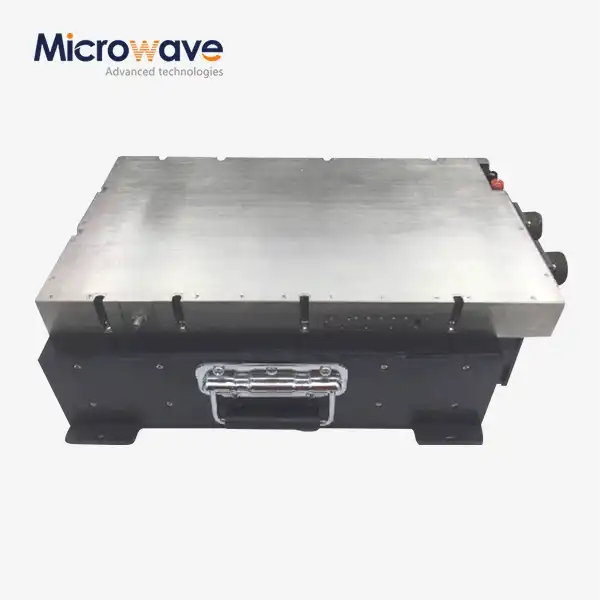 VIEW MOREAc Power Amplifier
VIEW MOREAc Power Amplifier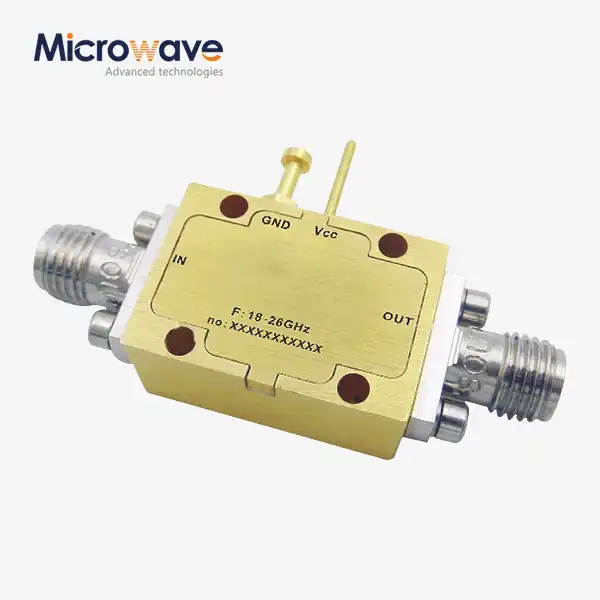 VIEW MOREVoltage Controlled Phase Shifter
VIEW MOREVoltage Controlled Phase Shifter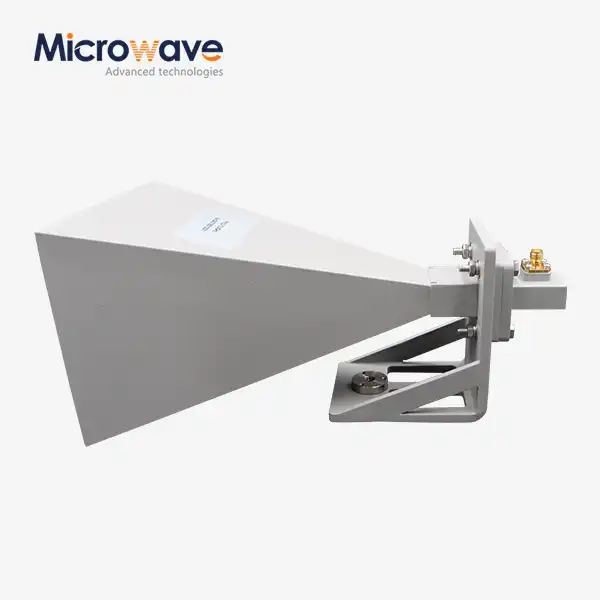 VIEW MOREStandard Horn Antenna
VIEW MOREStandard Horn Antenna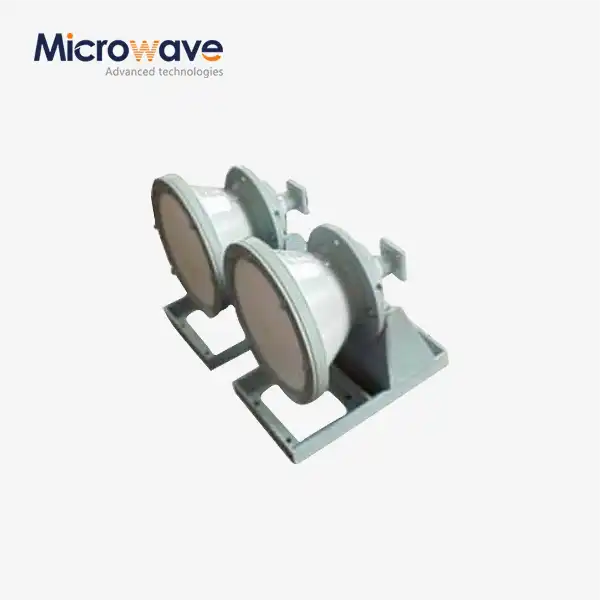 VIEW MOREConical Horn Lens Antenna
VIEW MOREConical Horn Lens Antenna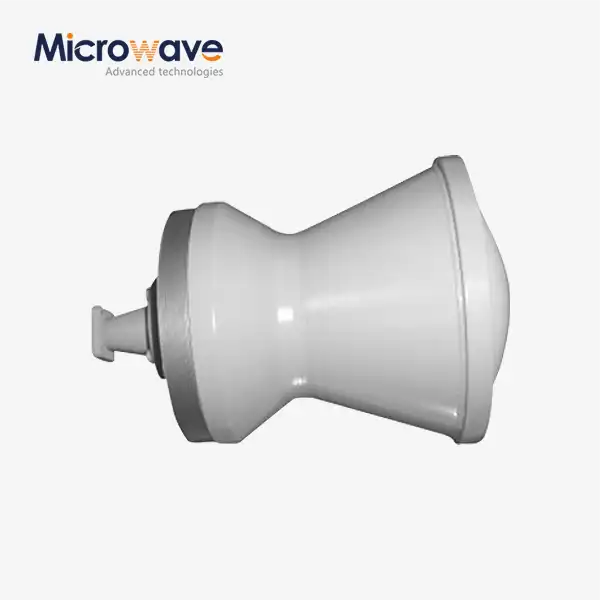 VIEW MOREPoint Focusing Horn Lens Antenna
VIEW MOREPoint Focusing Horn Lens Antenna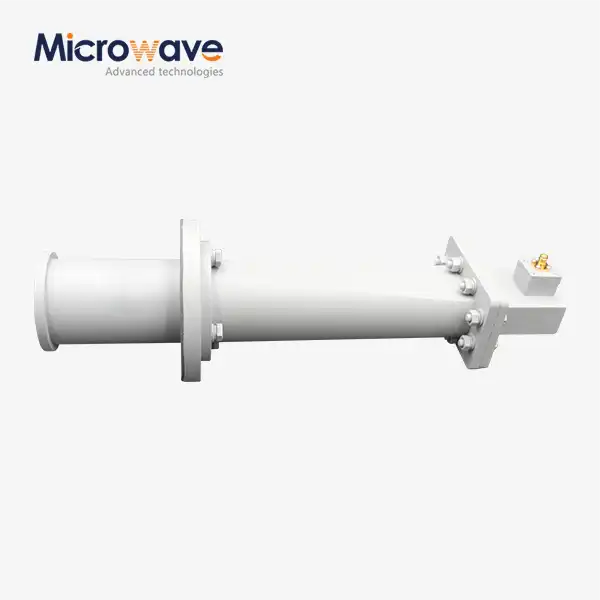 VIEW MORECorrugated Horn and Multimode Horn Antenna
VIEW MORECorrugated Horn and Multimode Horn Antenna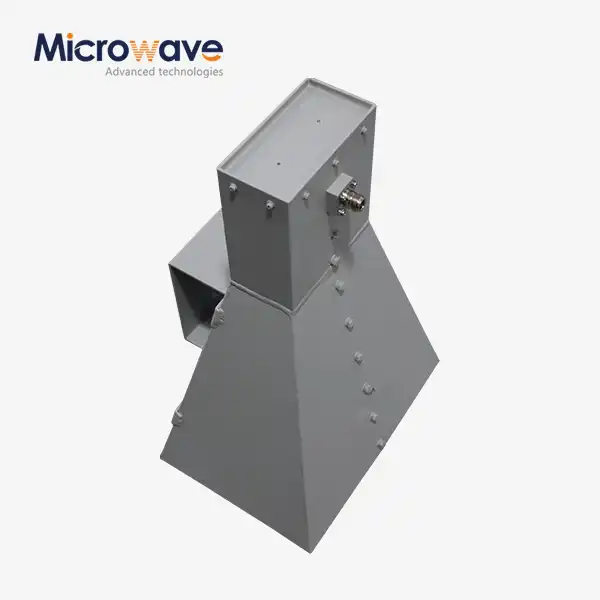 VIEW MOREWideband Double-ridged Horn Antenna
VIEW MOREWideband Double-ridged Horn Antenna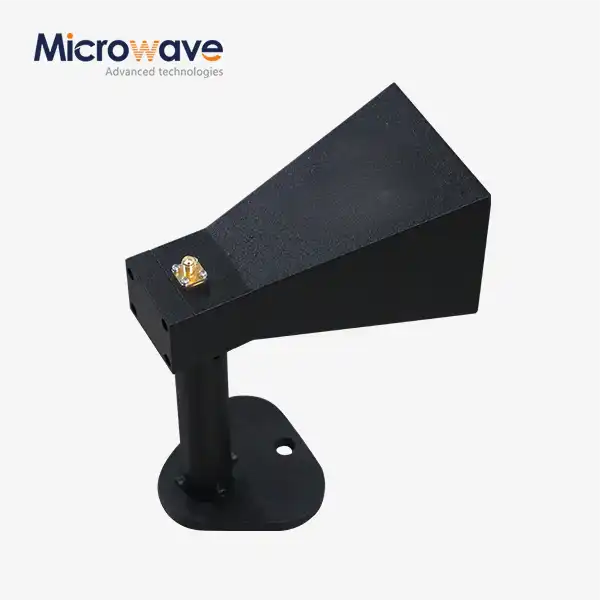 VIEW MOREMini Wideband Double-ridged Horn Antenna
VIEW MOREMini Wideband Double-ridged Horn Antenna




